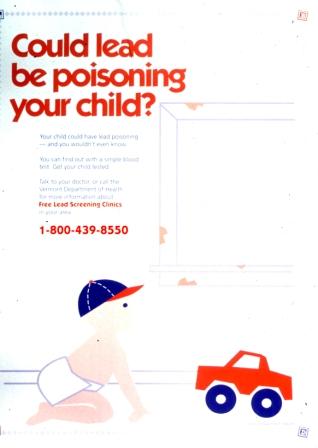美国FDA通过血铅筛查计划
In September 2006, the Food and Drug Administration expanded the availability of the first simple and portable lead test system to more than 115,000 certified point-of-care locations nationwide, including health care clinics, mobile health units, and schools. This action will make it easier and faster for children and adults to be tested and treated for lead poisoning.
The LeadCare II Blood Lead Test System is made by ESA Biosciences of Chelmsford, Mass. The test is used to screen children and adults for harmful levels of lead using a finger stick or venous whole blood sample. It is performed while the patient is present, in as little as three minutes. The rapid result means a second sample for further testing can be obtained quickly, if needed, reducing the need for a follow-up visit.

Health care providers will have more opportunities to test for lead exposure in the community and to detect and treat people earlier, before the damaging effects of lead poisoning occur, says Acting FDA Commissioner Andrew C. von Eschenbach, M.D. "FDA's expansion of the test's availability bolsters ongoing efforts to reach populations at greatest risk for lead poisoning and to expand testing inside communities. This may be particularly true for young children and inner city residents who may face obstacles accessing healthcare."
The FDA broadened access to the test system by granting an application to categorize the test as waived under the Clinical Laboratory Improvement Amendments (CLIA). These amendments permit widespread distribution to nontraditional laboratory sites that have a CLIA waiver certificate. A test can be performed at a laboratory with a waiver certificate if it is proven to be simple, accurate, and reasonably free of harm.
At this time, the test is available only at certain hospitals, private and public health laboratories, and other testing facilities with the capability of performing moderate- and high-complexity testing. Patients whose results are borderline or positive must make a second appointment with their doctor for follow-up testing. But some people fail to do this, and doctors sometimes have difficulty reaching patients to give them their results or to discuss treatment options.
Lead poisoning in children typically results from ingesting dust from deteriorating lead-based paint or from drinking water from corroding plumbing. Lead poisoning may have no symptoms, but symptoms can include headaches, stomach cramps, fatigue, memory loss, high blood pressure, and seizures. Lead poisoning in children has been linked to learning disabilities and developmental delays.
According to the Centers for Disease Control and Prevention (CDC), more than 300,000 children younger than age 6 each year have blood levels that exceed 10 milligrams per deciliter, the threshold used to indicate lead poisoning. The U.S. Department of Housing and Urban Development estimates that 24 million homes in the United States have significant lead-based paint hazards. The American Academy of Pediatrics (AAP) estimates that 1 out of 4 homes with children younger than age 6 has lead contamination.
The CDC and the AAP have issued recommendations for screening children at ages 1 and 2 who live in high-risk homes. The LeadCare II Blood Lead Test System also will aid adults exposed to lead in occupational settings where the availability of immediate lead test results will help to identify problems early.
The ease and accuracy of the test system were evaluated by testing 516 blood samples over a two-month period at 11 sites. The test instrument applies an electrical current to the patient's blood sample, causing lead to collect on disposable sensors. Studies show that nearly 98 percent of the values measured by the test instrument were within Occupational Safety and Health Administration's recommendations for blood lead proficiency testing. Another laboratory method should be used to confirm blood lead values above 10 milligrams per deciliter.

